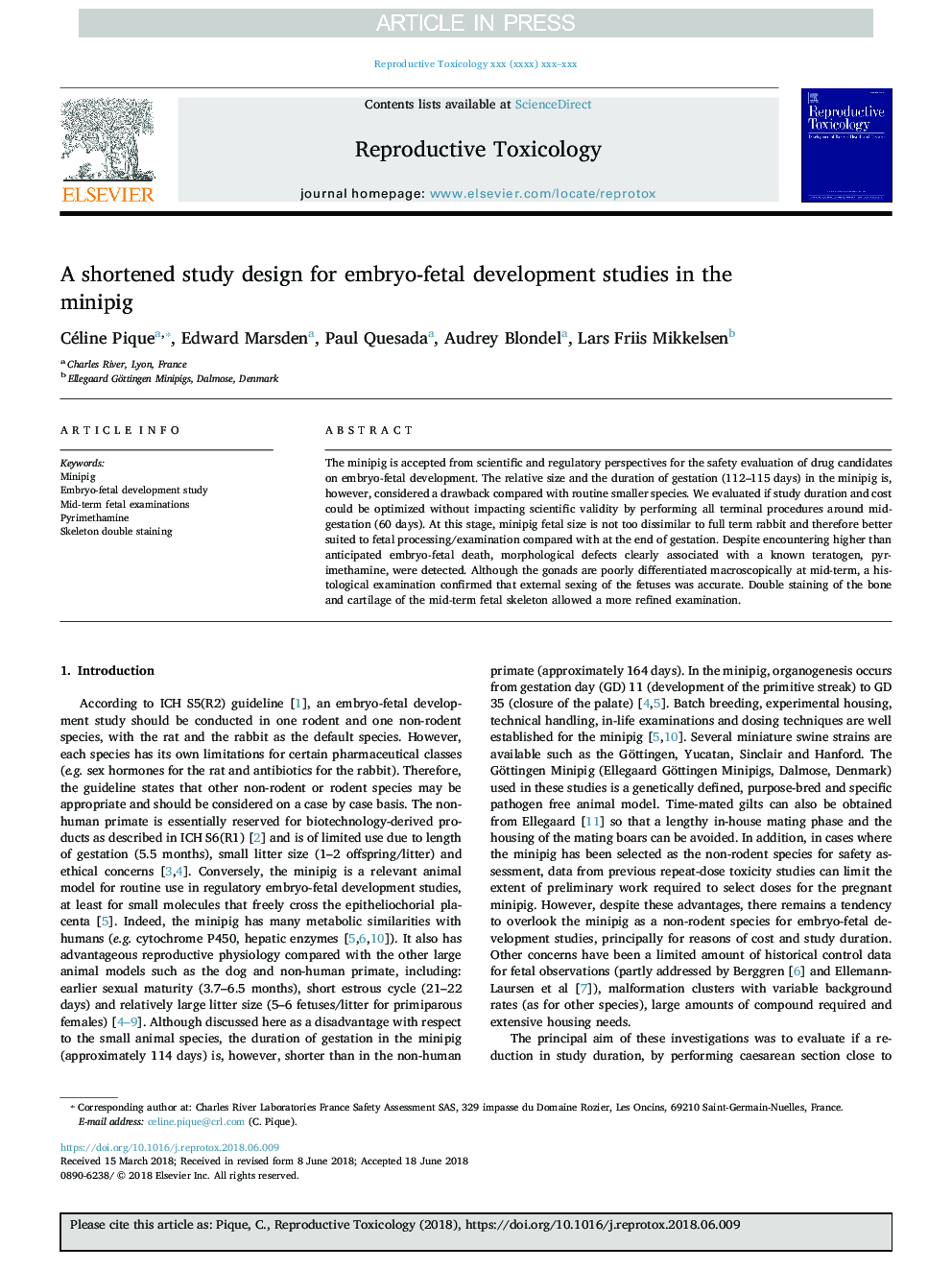| Article ID | Journal | Published Year | Pages | File Type |
|---|---|---|---|---|
| 8962458 | Reproductive Toxicology | 2018 | 9 Pages |
Abstract
The minipig is accepted from scientific and regulatory perspectives for the safety evaluation of drug candidates on embryo-fetal development. The relative size and the duration of gestation (112-115 days) in the minipig is, however, considered a drawback compared with routine smaller species. We evaluated if study duration and cost could be optimized without impacting scientific validity by performing all terminal procedures around mid-gestation (60 days). At this stage, minipig fetal size is not too dissimilar to full term rabbit and therefore better suited to fetal processing/examination compared with at the end of gestation. Despite encountering higher than anticipated embryo-fetal death, morphological defects clearly associated with a known teratogen, pyrimethamine, were detected. Although the gonads are poorly differentiated macroscopically at mid-term, a histological examination confirmed that external sexing of the fetuses was accurate. Double staining of the bone and cartilage of the mid-term fetal skeleton allowed a more refined examination.
Keywords
Related Topics
Life Sciences
Environmental Science
Health, Toxicology and Mutagenesis
Authors
Céline Pique, Edward Marsden, Paul Quesada, Audrey Blondel, Lars Friis Mikkelsen,
